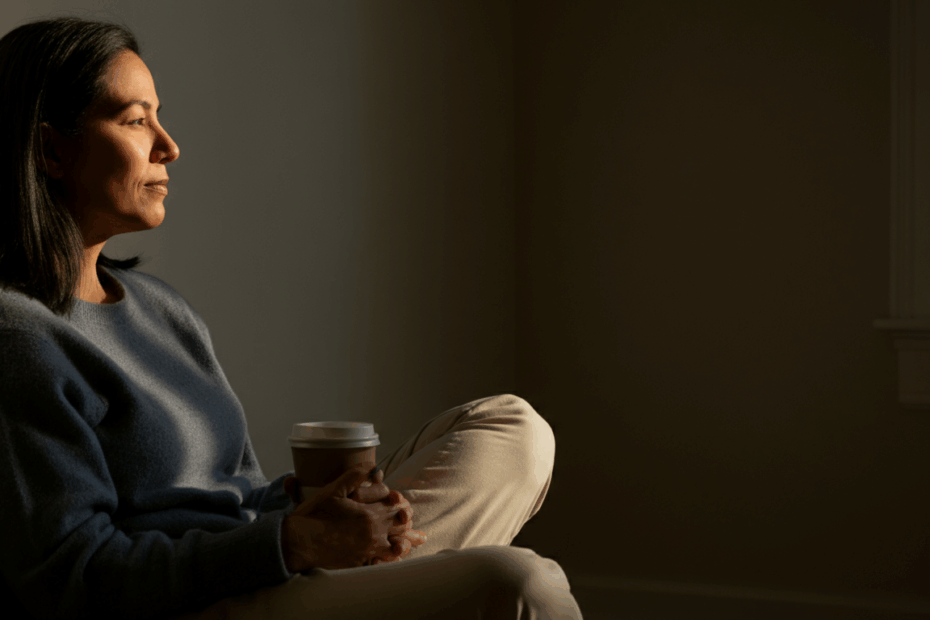Stressed by the market? 📈📉 Discover how the S&P 500 mid-year outlook is becoming a lifestyle trend for better financial wellness!#SP500 #Investing #Wellness
🎧 Listen to the Audio
If you’re short on time, check out the key points in this audio version.
📝 Read the Full Text
If you prefer to read at your own pace, here’s the full explanation below.
Topic Overview
John: Hello everyone, welcome to our blog where we dive into emerging lifestyle trends that are capturing attention worldwide. Today, Lila and I are exploring something that’s not your typical wellness fad but is increasingly intertwined with modern living: the S&P 500 Outlook Mid-Year Investments Market Volatility. At its core, this trend refers to how people are paying closer attention to the mid-year forecasts for the S&P 500 stock index, incorporating investment strategies into their daily routines, and navigating market ups and downs as part of a balanced lifestyle. It’s about viewing financial awareness not just as money management, but as a form of self-care that promotes stability and mindfulness in an unpredictable world.

Lila: Oh, John, that sounds intriguing! As someone who’s just starting to get into lifestyle trends, I was surprised to see how stock market outlooks are blending into everyday habits. Like, isn’t the S&P 500 that big list of top U.S. companies? And mid-year investments mean checking in halfway through the year to adjust your plans? Market volatility is all those ups and downs that can stress people out. But framing it as a lifestyle thing makes sense—it’s like adding financial fitness to your morning routine, right? For beginners like me, it’s exciting to think of it as a way to build resilience, much like yoga or journaling.
John: Exactly, Lila. The S&P 500 is indeed an index tracking 500 major U.S. companies, and its outlook provides insights into economic health. Mid-year reviews allow people to reassess their investments, which in a lifestyle context means aligning financial goals with personal well-being. Market volatility, those fluctuations in stock prices, can affect everyone’s mood and decisions, from retirees in Europe to young professionals in Asia. According to lifestyle sections in outlets like Nikkei Asia, this awareness is becoming a global habit, helping people integrate economic mindfulness into their lives for better stress management and long-term planning.
Lila: Wow, that global angle is cool! I imagine someone in Tokyo sipping matcha while reviewing their portfolio, or a family in London discussing volatility over dinner. It’s not just about money; it’s about how these trends influence our daily peace of mind. John, can you explain it simply? Like, if volatility is high, does that mean more excitement or more worry in everyday life?
John: Great question, Lila. High volatility often means more uncertainty, which can lead to worry, but many are turning it into a positive by using it as a prompt for mindful reflection. For instance, CNN Health has discussed how financial stress from market swings can impact mental health, suggesting practices like breathing exercises during economic news updates. This trend is about empowering beginners to see investments as part of a holistic lifestyle, not something reserved for experts.
Lila: I love that! It’s relatable—like treating your finances like a garden that needs mid-year tending to weather the storms. For our international readers, no matter if you’re in Brazil or Japan, this could mean starting small, maybe with apps that track the S&P 500 in a fun, low-pressure way.
Why It’s Trending Now
John: So, why is the S&P 500 Outlook Mid-Year Investments Market Volatility gaining traction as a lifestyle trend right now? Based on real-time insights from posts on X (formerly Twitter), there’s a buzz around mid-2025 forecasts, with users sharing how economic shifts are affecting their daily lives. For example, discussions highlight growth scares in early quarters but optimism for Fed support, tying into broader wellness by reducing anxiety through informed planning.
Lila: That’s fascinating! I’ve seen posts on X where people are talking about the S&P 500 potentially hitting new highs by mid-year, but with warnings of volatility due to policies like tariffs. It’s like the market’s mood swings are mirroring our own life’s unpredictability. Why do you think it’s popping up in lifestyle conversations now, John?
John: Well, Lila, the current date is around mid-2025, and with recent events like policy changes under new administrations, people are seeking stability. Lifestyle media like The Guardian Lifestyle notes that post-pandemic, financial wellness has become a key self-care pillar, especially with global inflation and trade uncertainties. Posts on X reflect this, with users predicting S&P 500 levels around 6,800 to 7,000, encouraging a mid-cycle mindset where returns are higher and drawdowns shallower—translating to less stress in daily life.
Lila: Oh, mid-cycle years sound like that comfortable phase in life where things are steady but exciting. I saw X posts mentioning a sharp correction in Q2 but a fast recovery, which feels like a metaphor for bouncing back in personal challenges. It’s trending because it’s relatable—everyone wants that V-shaped recovery in their own routines!
John: Precisely. NHK World-Japan has covered how Asian markets are responding to U.S. volatility, influencing lifestyle choices like budgeting for travel or wellness retreats. The trend is amplified by social media, where real-time shares make complex finance feel accessible, turning it into a communal lifestyle practice.
Lila: Totally! It’s like the stock market is the new weather app—people check it to plan their day, avoiding volatility storms by adjusting their sails, or in lifestyle terms, their habits.
Real-Life Benefits
John: Let’s talk about the real-life benefits of embracing this trend. Incorporating S&P 500 outlooks into your mid-year routine can foster financial literacy, which boosts confidence and reduces anxiety. Lifestyle experts from official wellness sites emphasize that understanding market volatility helps in building resilience, much like mindfulness practices that prepare you for life’s uncertainties.
Lila: Yes! Imagine feeling more in control during economic dips—it’s like having a mental safety net. From what I’ve gathered, benefits include better sleep by not fretting over news, or even using volatility insights to make smarter choices, like saving for a dream vacation instead of impulsive spending.
John: Absolutely, Lila. Globally, this trend promotes work-life balance; for instance, in Europe, where The Guardian Lifestyle discusses how investment awareness ties into sustainable living, people are using mid-year reviews to align finances with eco-friendly habits, leading to long-term satisfaction.
Lila: That’s inspiring! In Asia, as per Nikkei Asia, it’s helping young adults integrate investing into their wellness routines, like combining it with exercise apps for a holistic approach. The benefit? A sense of empowerment that spills over into relationships and personal growth.
John: And don’t forget mental health perks—CNN Health links financial stability from such trends to lower stress levels, encouraging beginners to start small for gradual benefits.
Lila: So true! It’s like adding a financial yoga pose to your day—flexible and strengthening over time.
How People Are Using It
John: Now, how are people actually using this trend in their lives? From X posts, users are sharing mid-year outlooks to adjust lifestyles, like planning budgets around predicted S&P 500 rallies or preparing for volatility with calm routines.
Lila: Fun examples! I picture a student in India using free apps to track the index, tying it to study breaks for a balanced day. Or a parent in the U.S. discussing market trends at family meals to teach kids about resilience.
John: Yes, and internationally, NHK World-Japan shows Japanese commuters listening to podcasts on volatility during trains, blending it with daily commutes for informed, stress-free living.
Lila: Cool! In the UK, The Guardian Lifestyle might highlight using outlooks for mindful shopping, avoiding volatility-driven impulse buys.
John: Exactly. It’s about practical integration, like setting reminders for mid-year investment checks alongside wellness goals.
Lila: Relatable—like treating your portfolio like a fitness tracker, monitoring for health.
Tips for Trying It Yourself
John: For beginners eager to try this, start simple. Follow reliable sources for S&P 500 updates, perhaps once a week, to build habit without overwhelm. Remember, it’s about lifestyle integration, not expertise.
Lila: Great tip! What about apps? I think using free ones to visualize volatility could make it fun, like a game.
John: Yes, and combine with journaling: note how market news affects your mood, turning it into a self-reflection tool.
Lila: Love that! For global readers, adjust for time zones—check Asian markets in the morning if you’re in Europe.
John: Also, diversify thoughts: Read lifestyle media for balanced views, avoiding fixation on numbers.
Lila: And start small—no big investments, just observation for now.

Misconceptions & Cautions
John: There are misconceptions, like thinking this trend requires being a stock expert—it’s not; it’s about awareness for better living.
Lila: Right! Another is that volatility always means loss—X posts show recoveries can be quick, like the V-shaped one in 2025.
John: Caution: Don’t make decisions based solely on social media; always cross-check with credible sources.
Lila: Yes, and remember, it’s not financial advice—just a lifestyle lens.
John: Globally, cultural differences matter; what works in the U.S. might differ in Japan.
Lila: So, approach with curiosity, not pressure.
What People Are Saying on X + Expert Voices
John: On X, sentiment is mixed but optimistic—posts predict S&P 500 at 6,800 by year-end, with Fed support easing volatility fears.
Lila: Exciting! Users warn of Q2 scares but highlight mid-cycle stability.
John: Experts from lifestyle media echo this; Nikkei Asia notes Asian investors using outlooks for balanced lives.
Lila: And CNN Health experts stress mental prep for volatility.
John: Overall, X buzz shows it’s a unifying trend.
Lila: Totally buzzing!
Related Habits or Concepts
John: This ties into financial mindfulness, like slow budgeting—deliberate spending reviews.
Lila: Or digital detoxes during high volatility news.
John: Also, global nomadism, where investment awareness supports flexible lifestyles.
Lila: And wellness investing, putting money into health trends.
John: It’s all connected for holistic living.
Lila: Yes!
FAQ (Frequently Asked Questions)
John: Let’s address some FAQs.
- What is the S&P 500? A stock index of 500 large U.S. companies.
- How does mid-year outlook help? It allows reassessment for better planning.
- Is volatility always bad? No, it can offer opportunities if approached mindfully.
- Can beginners join this trend? Absolutely, start with education and observation.
- How to stay calm during market swings? Combine with relaxation techniques from wellness sites.
Lila: These are super helpful!

Final Reflections
John: Covering S&P 500 Outlook Mid-Year Investments Market Volatility was refreshing—it shows how even niche trends reflect bigger lifestyle shifts worldwide. The smallest change can spark long-term improvement.
Lila: Totally! I learned so much about S&P 500 Outlook Mid-Year Investments Market Volatility, and I’m excited to try it out myself. It feels like a trend that brings people closer to themselves.
Disclaimer: This article is intended for general informational purposes only. Always consult with a qualified expert for personal advice.
